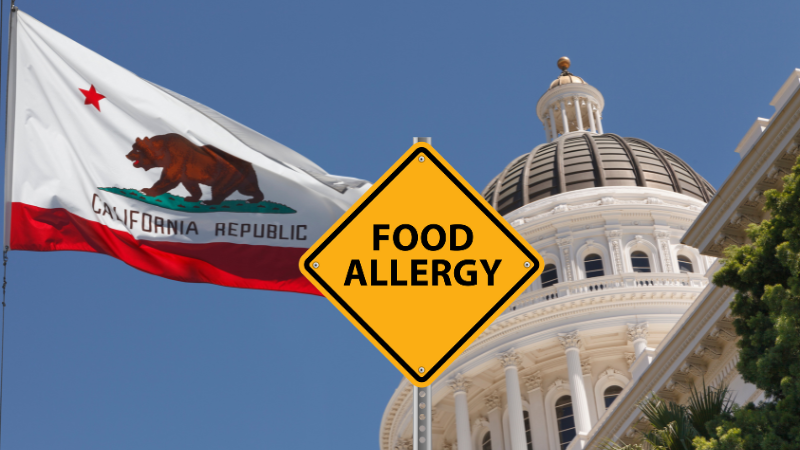
CHICAGO, August 26, 2025 — Restaurants in California would be required to flag menu items containing a potential allergy-triggering ingredient under a bill slated for a vote in the state Senate next month.
The method of disclosure would vary according to the type of restaurant. Units of chains with more than five branches statewide would be required to list the allergen next to or under an item’s mention on printed menus, menu boards, or digital bills of fare, including ones that are called up via a QR code.
The heads-up can be given in print, icon, or picture form.
Places that use a digital menu would be required to have one of several types of permitted printed backups for customers who aren’t digitally literate.
Those possibilities include a separate menu listing the allergen-containing items and a printed warning that can be handed to guests.
Independent restaurants and units of chains with five or fewer stores within the state have a broader array of options. They, too, can post the alerts on their printed menus, menu boards, or digital menus. But they can also alert customers by offering a separate menu of allergen-containing items, along with such other handouts as a grid or booklet detailing what menu options pose an allergy risk.
The disclosure requirements for all establishments goes into effect July 1, 2026.
The bill, SB 68, lists nine potential allergens that must be flagged. The roster adds sesame to the usual eight most common allergy triggers: Milk, eggs, fish, shellfish, tree nuts, wheat, peanuts, and soybeans.
The bill specifies that “highly refined oils” made from the nine common triggers would not be regarded as allergens and would not need to be flagged on menus.
The bill is another example of governments’ increasing efforts to safeguard consumers with food allergies, which can be lethal.
Illinois recently passed a law requiring food handlers to receive allergy prevention instruction as part of their mandated food-safety training.
The U.S. Food and Drug Administration announced last week that it will hold a virtual conference in November on lessening allergy threats. Among the topics slated by the agency for discussion is “enhanced labeling practices.”
About 33 million Americans, or 1 in 10 adults and 1 in 13 children, have a food allergy, according to a group called FARE, or Food Allergy Research and Education.
More than half of those adults and 42% of the children have experienced a serious reaction to something they had eaten.
As Managing Editor for IFMA The Food Away from Home Association, Romeo is responsible for generating the group's news and feature content. He brings more than 40 years of experience in covering restaurants to the position.